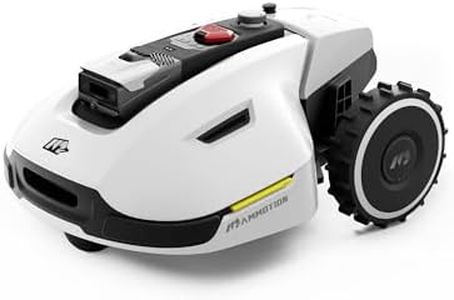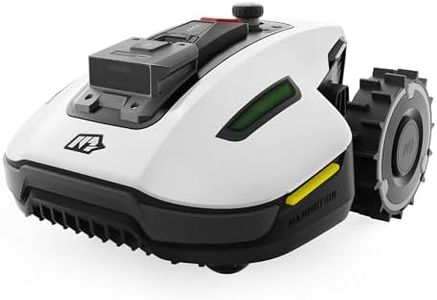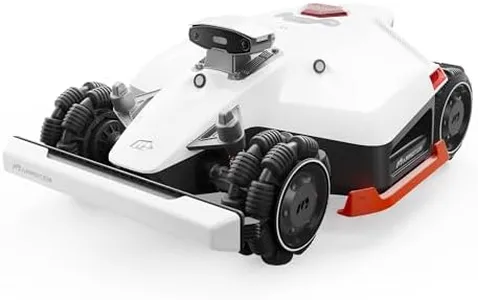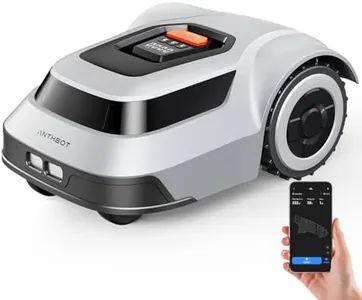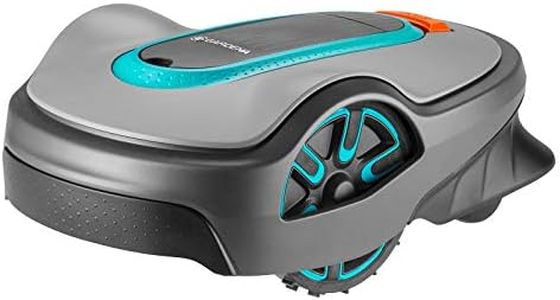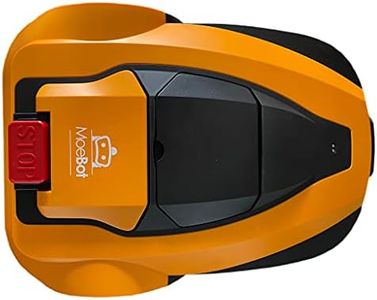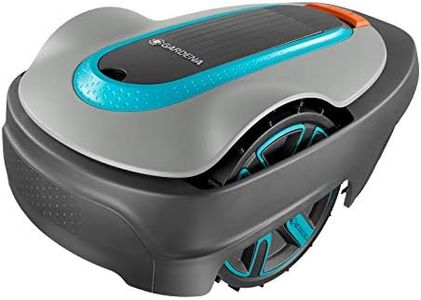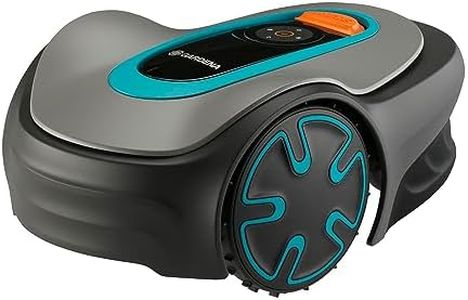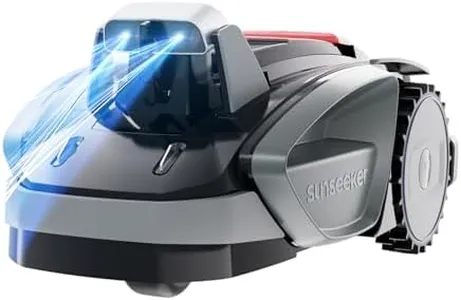We Use CookiesWe use cookies to enhance the security, performance,
functionality and for analytical and promotional activities. By continuing to browse this site you
are agreeing to our privacy policy
10 Best Lawn Robot
From leading brands and best sellers available on the web.Buying Guide for the Best Lawn Robot
Choosing a lawn robot, or robotic lawn mower, can be a great way to keep your yard tidy with minimal effort. Before you buy, think about your yard’s size, shape, and obstacles. Consider how much time you want to spend on maintenance and how tech-savvy you feel, as some models are easier to program and maintain than others. Always check the robot’s safety features and whether replacement parts are readily available. Lastly, read user reviews to see how a model performs over time.Cutting Area CapacityCutting area capacity tells you the maximum size of lawn the robot can handle, measured in square meters or acres. This matters because a robot designed for small lawns will struggle on a large property. Cutting area capacity ranges from small (up to 500 m²), medium (500–1500 m²), to large (over 1500 m²). Choose one that matches your lawn size: for a small city yard, a lower capacity works, while large suburban or rural lawns need models rated for bigger areas.
Battery Life and Charging TimeBattery life is how long the robot can mow on a single charge, while charging time is how long it takes to refill the battery. Short battery life and long charging can lead to incomplete mowing jobs, especially on larger lawns. Lawn robots often have battery life ranging from 45 minutes to several hours, with charging taking 1 to 3 hours. For small lawns, shorter battery life is fine, but for big lawns, longer runtime means fewer interruptions and quicker mowing cycles.
Cutting Height and WidthCutting height is how low or high the mower cuts the grass, and cutting width is how wide a strip it can mow in one pass. If you prefer longer or shorter grass, check for adjustable cutting height. Most models offer several options, letting you tailor the look of your lawn. Cutting width determines how quickly the robot can cover your yard—narrow widths mean more time needed, while wide ones finish faster. Choose settings that match your grass style and the size/shape of your lawn.
Navigation and Obstacle SensorsNavigation sensors help the robot find its way around your lawn efficiently, while obstacle sensors prevent it from bumping into things like trees, toys, or flower beds. Simpler robots often move in random patterns, while more advanced ones use smart navigation or GPS for efficient coverage. If your lawn is simple and open, basic navigation will do, but for intricate landscapes with lots of obstacles or odd shapes, opt for a robot with advanced sensors.
Slope Handling AbilitySlope handling tells you how steep an incline the mower can safely climb and work on, usually shown as a percentage or degree. This is crucial if your yard isn’t flat. Some robots manage only gentle slopes (around 15%), while others handle steeper inclines (up to 45%). If your lawn is flat, slope capability isn’t important, but uneven or hilly lawns require a mower that can cope with the gradients to ensure thorough cutting everywhere.
Noise LevelNoise level is how loud the robot is when operating, measured in decibels (dB). Lower noise is ideal if you live in a quiet neighborhood or like to mow early or late. Levels usually range from 55 to 75 dB, with lower numbers being quieter. If noise is a concern—for example, with close neighbors or sensitive family members—look for a quieter model.
Smart Features and ConnectivitySome lawn robots offer smart features like app control, scheduling, or integration with voice assistants. These can make managing your mower very convenient, letting you adjust schedules or check mowing status from your phone. Robots with more connectivity are great if you like using technology, while simpler models suit those who just want to set and forget.
Maintenance NeedsMaintenance involves cleaning, blade changes, and other routine care. Some models are easier to look after, with parts that are simple to access and clean. If you don’t want much hassle, choose a mower known for low-maintenance operation and easily available parts. If you’re comfortable with basic mechanical tasks, this may be less important.
